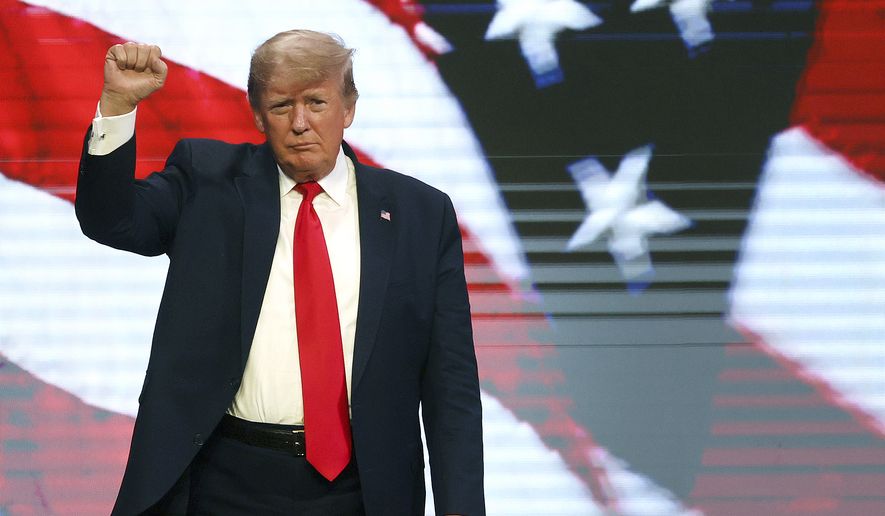OPINION:
Constitutionally speaking, the most amazing thing about Friday’s blockbuster Supreme Court decision to overturn Roe v. Wade is that anyone found it controversial in the first place. Or, that Roe v. Wade was ever decided by any court, let alone the Supreme Court. Or, that Roe — and its flawed follow-on, Casey v. Planned Parenthood — held for 50 years.
Displaying a firm grasp of the obvious, the high court writes: “The constitution does not confer a right to abortion; Roe and Casey are overruled; and the authority to regulate abortion is returned to the people and their elected representatives.”
Any child with fifth-grade reading skills could tell you that nowhere in the Constitution does the word “abortion” appear. And no understanding of the spirit of the Constitution implies a right of one human being to dismember and “evacuate” another human being.
Thus, it is nothing short of astonishing that so many justices on the highest court in the land nominated by both political parties over the decades somehow discovered and defended an entirely manufactured and politically fraught “right” in the constitution.
The whole 50-year constitutional nightmare has finally come to a close. The American people — through their elected legislatures — will now decide the deeply moral and public issue of abortion.
Perhaps, at some point in the future, the courts will grapple with the very real constitutional right to life of the unborn. But, for now, abortion in some fashion will remain legal for the vast majority of Americans living in most states of the Union.
Justice Samuel A. Alito Jr.’s historic opinion overturning Roe v. Wade is so clear, simple and straightforward that law students 50 years from today will marvel that it was ever controversial. And they will wonder how we ever got here in the first place.
As a political issue, abortion has been a lightning rod — made all the more electric because nine unelected men in black robes snatched the issue away from voters and their elected representatives in 1973. That court was particularly obnoxious when it ordered the American people to “end their national division” over the issue once the court had mansplained it for us.
Oh my.
While the ruling in Roe held, the people did not quiet their divisions — as always happens when the democratic process gets hijacked.
Ever since abortion has been a hotly partisan issue over which elections have been won and lost and hundreds of millions of dollars have been raised by politicians debating the issue. Republican politicians promised to oppose abortion. Democrat politicians promised to support abortion — or “choice,” as they used to call it. But none of these politicians actually accomplished anything.
Until former President Donald Trump came along.
It is worth noting that Roe was initially decided on a 7-2 ruling. Five of the seven justices in that 1973 opinion creating abortion “rights” were nominated to the high court by Republican presidents. When that basic “right” to abortion was upheld by Casey 19 years later, the controlling plurality contained only three justices — all three of whom were nominated by Republican presidents.
Two justices in particular — John Paul Stevens and David Souter — went even further by becoming full-fledged members of the liberal, activist wing of the court. Justice Stevens was nominated by Republican Gerald Ford and Justice Souter was nominated by Republican George H.W. Bush.
President George W. Bush’s record on the court is just as spotty as all his Republican predecessors. He nominated Chief Justice John G. Roberts Jr., who has become the high court’s Hamlet — forever torn between the constitution and his institutionalist aversion to change. Most famously, he contorted himself to preserve Obamacare — a decision that was constitutionally indefensible but kept the Supreme Court out of a political food fight over health care.
Chief Justice Roberts is a pretzel in a black robe.
To his credit, Mr. Bush also nominated Justice Alito, who authored the opinion overturning Roe. But that was only after Mr. Bush first tried nominating his personal friend, White House Counsel Harriet Miers, who was ultimately rejected by conservatives unsure of her judicial philosophy.
When Mr. Trump came along in 2016, anti-Trumpers in the Republican party freaked out and warned that Mr. Trump would fill the courts with lunatic left-wingers — much like all the Republicans before him had. These anti-Trumpers insisted that Mr. Trump would nominate his own family members to the Supreme Court.
In an act of political humility unheard of in Washington, Mr. Trump openly acknowledged he was new to the issue of judicial nominations and openly sought the advice of others. He was shocked to discover that presidents before him had nominated so many judges who brazenly replaced the Constitution with their own political opinions. Mr. Trump vowed to nominate actual constitutionalists to the federal courts and even published a list of judges from which he promised to pick. He kept every promise — without apology.
With a heroic assist from Senate Republican Leader Mitch McConnell, Mr. Trump placed 243 judges on the federal bench, including three justices on the Supreme Court. Of those three justices, all three voted to restore the Constitution and return power to the American people.
It is so ordered.
• Charles Hurt is the opinion editor at The Washington Times.




Please read our comment policy before commenting.